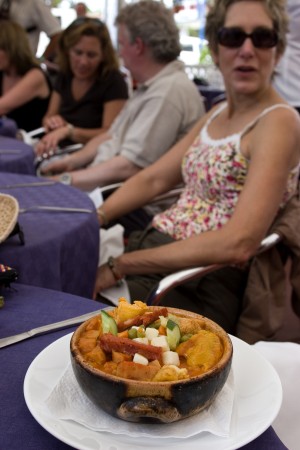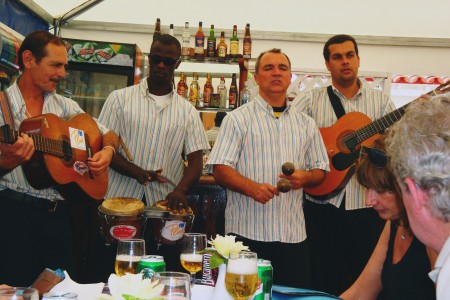A British guidebook on Cuba describes Viñales as “a perfectly preserved Colonial settlement.” Really? I mean when I think of a perfectly preserved Colonial town I think of places like San Miguel de Allende in Mexico. Or maybe Guanajuato.
Viñales, in contrast, is basically little more than a Cuban Mayberry; a sleepy two-block long main street named after Salvador Cisneros Betancourt who played second fiddle to José Martí during the Cuban War of Independence. (I think most Cubans have forgotten that Cisneros lobbied for and helped pass the Platt Amendment in the Cuban Constitution, thus ensuring American involvement on the island for the next hundred year and the establishment of that little outpost on the eastern end of the island, Guantánamo).
In the middle of town is a small central square, Parque Martí, bounded by a very modest church, Iglesia del Sagrado Corazó, which looks like it could have been the perfect setting for a shoot-out in one of Clint Eastwood’s old spaghetti Westerns (it would also make a fine crypt for El Comandante—I’m just saying). Next door, the arcades of an old Colonial mansion, once the diplomatic headquarters of the Spanish gentry, have been turned into folk-art flea market, selling hand-made instruments—claves and guiros—and other Cuban tsotchkes in front of what is now the Casa de la Cultura.
In the cool shade of the arcade was an old guy in a straw hat and tattered blue shirt who looked like a Cuban version of Barney Fife. He was smoking the most outrageous (and obviously hand-rolled) cigar I’d ever seen. The monster stogie stuck out of the middle of his mouth, like a snake’s tongue, drooping from its own weight.
I asked the old guy if he could tell me where Casa de Don Tomás was. With smoke swirling round his leathered head, he nodded up the street without saying a word.
Our British guidebook said Don Tomás was not only the best restaurant in town but also an architectural gem, a colonial home built in 1887 for a rich Spanish merchant. They said the house had recently been restored and had a gorgeous terra-cotta roof and “exuberant flowering vines bursting from the balcony.”
What we got, when we found Don Tomás, was a concrete patio with a white canvas roof. Evidently the celebrated Casa de Don Tomás had been flattened by Hurricane Gustav last September (amazingly, while the storm destroyed some 100,000 homes on the island, there wasn’t a single death). Where the historic building had stood for over a 120 years was now little more than a big pile of bricks and rubbish.
But one does not close down an institution like Don Tomás, even if the physical part of the business has vanished, so operations were simply moved across the street. No doubt in four or five years a faux Don Tomás, complete with a terra-cotta roof and flowering bougainvillea, will rise from the rubble.
But while the setting was a disappointment, the lunch was not. There were the refreshing El Trapiche cocktails, made with white rum, pineapple juice, and honey with a sliver of sugar cane for a swizzle stick, and the house specialty, called delicias de don Tomás, a kind of paella made with rice, lobster, fish, pork and sausage, served in a little brown ceramic bowl, as well as a most excellent live son band called Guacachason (ironically, the CD the band sold when they took a break featured a photo of the 5-piece group standing in front of what used to be Casa de Don Tomás—red tile roof, flowering balconies, and everything).
The day was hot and humid; no one was anxious to go back out into the afternoon sun. So, after lunch, we ordered more drinks and kicked back listening to the excellent son band play canciones para recordar—songs to remember. Not a bad way to spend a hot afternoon.






Recent Comments